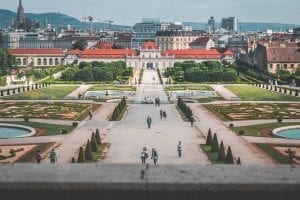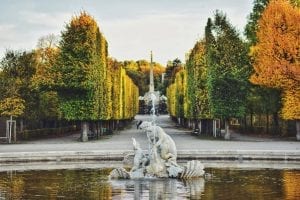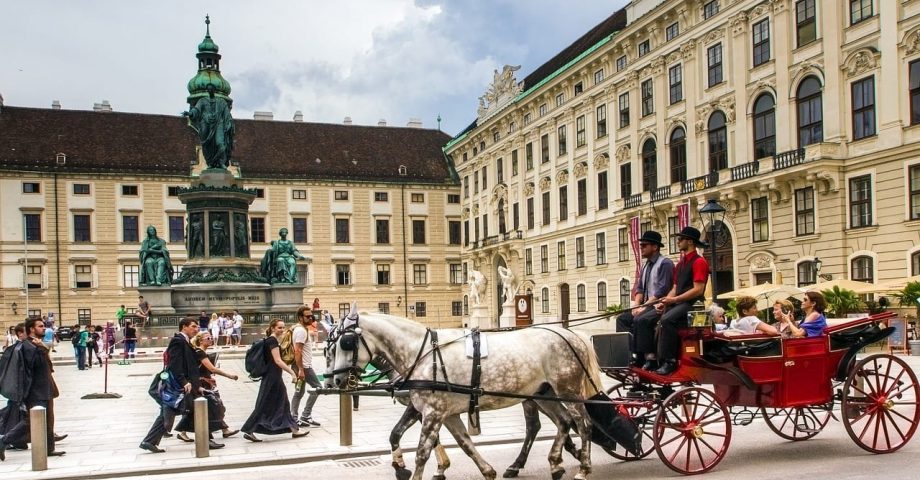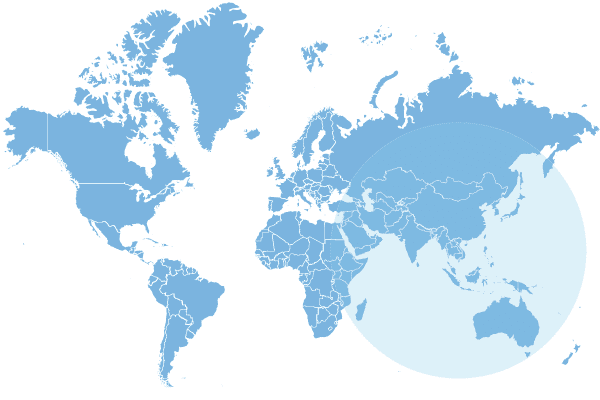10 Vibrant Facts about Vienna
Is there any capital city in the world quite as beautiful as Vienna? It certainly has to be in the top ten! Austria’s gorgeous capital is well known for its architecture, its history, and its musical links. Even if you only know of the city from the 80s song of the same name, now’s the time to clue up with some fantastic and fun facts about Vienna.
1. Where is Vienna?
Vienna is the capital city of Austria, and can be found in the eastern part of the country, not too far from the borders of Slovakia, Hungary, and the Czech Republic.
2. It’s a fairly large city!
Vienna covers an area of about 414.6 square km, or around 160 square miles. That means it is over three times smaller than Los Angeles in California!
3. How many people live in Vienna, anyway?
As of 2019, about 1.897 million people were living in Vienna. And, while many refer to people from Vienna as being Viennese, they are actually called Wieners and Wienerin! This is because Vienna is pronounced “Veen” in German.
4. Learn that lingo!
Generally speaking, most people in Vienna speak German as their first language. However, Hungarian, Croatian, Slovenian, and Turkish are all commonly spoken in the city, too. If you plan on visiting the city, though, it’s best to learn a bit of German first!
5. Famous Wieners and Wienerin!
Vienna is known for being home to many famous people throughout the centuries! It is particularly well-known for its musical talents, such as Beethoven, Mozart, Haydn, Johann Strauss, Franz Schubert, Brahms, Mahler, Anton Bruckner, and more!
6. Vienna waits for you…
Speaking of music, one of the most famous links to the city of Vienna nowadays is Billy Joel’s world-famous song, “Vienna!” He wrote the song following his visit to the city and referring to his father, who left when he was just a small child, moving to Vienna in Austria.
However, you might also recognize it as the subject of an 80s smash hit by Ultravox. “Vienna” remains their signature tune, and it’s likely you’ll find it on many an 80s-themed Spotify playlist.
7. Wine-enna!
Vienna is also well-known for its wine! This is due to the fact that it is the only capital city in the world to produce wine around and even inside the city! It has around 1,729 acres of vineyards and mostly produces white wine.
8. Nicknames all around!
As you can imagine, the city is known by names other than just Vienna! Due to its link to classical music, it is also known as the City of Music. And, thanks to Sigmund Freud (who is known as the father of psychoanalysis), Vienna is also commonly called the City of Dreams.

Belvedere Palace, Wien, Austria
9. One city, four zones.
Following the Second World War, Vienna was divided into four separate zones for each country ruling over it. It was divided between France, Russia, Great Britain, and the United States of America.
10. We built a zoo!
If you like animals and happen to be visiting Vienna, then you might want to swing by the world-famous Tiergarten Schönbrunn! It is the world’s oldest running zoo and was founded back in 1752. It is also known as one of the world’s most beautiful zoos thanks to its original baroque architecture! Time to break out the phone camera for a few snaps, then…

FAQs about Vienna
What is Vienna famous for?
Vienna is famous for a great many things! It is mostly known for its strong link to classical music, beautiful architecture, and division following the Second World War.
Is Vienna worth visiting?
Vienna is certainly worth visiting! In fact, it is a bucket-list city for a great many people. Just make sure you look up the best places to visit before you come, as you might get overwhelmed otherwise.
Do they speak English in Vienna?
Many people do indeed speak English in Vienna. Since the city receives over 17 million tourists every year, many hotel workers, restaurateurs, and tourist site workers do indeed speak English, too.
Further reading:
https://factcity.com/tag/europe
https://www.austria.info/en/where-to-go/cities/vienna
https://www.lonelyplanet.com/austria/vienna
Do you know any fun facts about Vienna? Share them in the comments below!
This page was last modified on July 26, 2023. Suggest an edit










